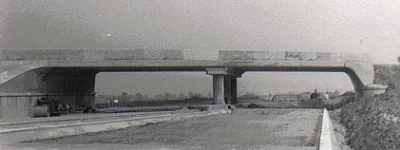In the example above, located a little way north-west of the city centre, the existing street network remains but has been restructured, with the Expressway (labelled Great Western Road) taking overall priority, a small number of other routes (with thicker black lines) providing through routes, and almost everything else merely a cul-de-sac branching from a more important road. Compare this to a modern map of the area which shows that, in this small area at least, the plan was mostly carried out. The accesses onto the A82 have mostly been blocked with access provided from the other end of the streets.
One of the most astounding things that the part of the Inner Ring Road we are familiar with - the north and west sides that exist as the M8 - is the quiet side of the ring. The five lanes of the Kingston Bridge were expected to carry 60,000 VPD in each direction, but further north, the two lanes at the north-west corner that currently form a bottleneck were designed for about 19,000 VPD. In contrast the south and east sides of the ring were designed to carry 28,000 VPD at their quietest point. It's no wonder the road we see today struggles to cope with through traffic - more than half of it was meant to take another route that was twice as wide.
The flat-pack network
In order to create a brand new road network across the whole of a city, some economy could be found in creating a set of standard, stock elements that could be repeated and re-used again and again in every situation. A Highway Plan for Glasgow has pages of standard highway cross-sections for different classes of road, bridge outlines, verge layouts, retaining walls, embankment angles, parapet designs, support columns, guard rails and more.
Much of this is the trivial matter of how wide hard shoulders should be, a particular textured pattern on retaining walls, or a nice bulge in the central reservation to direct traffic away from a right turn lane (above). Where it becomes most interesting is where the consultants start betraying their sources by proposing channelised junctions that are highly reminiscent of those found in American highway planning.
